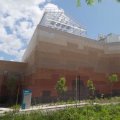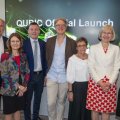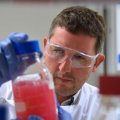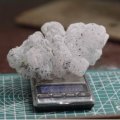In the wake of mining billionaire Clive Palmer’s announcement to build six mines in the Galilee Basin, UQ research is investigating the possibility of emission-free electricity from a plentiful underground energy source to power the development.
Research at UQ’s Queensland Geothermal Energy Centre of Excellence (QGECE) is directed towards a combination of clean coal and geothermal technologies which could produce zero-emission electricity for the future development of the Galilee Basin using coal-fired and geothermal power plants.
Centre Director Professor Hal Gurgenci said that mining required electrical power and to fuel future growth in Galilee Basin a new 1000-MW power station may be needed.
“Is it possible to power the development of the present and future mining prospects in the Galilee basin by zero-emission electricity? The research by The University of Queensland says yes,” Professor Gurgenci said.
“There are indications, which still need to be confirmed, that a significant geothermal heat source may exist in the Drummond Basin - the late Carboniferous granite structure underneath the Galilee Basin.”
The Centre is working with American and Japanese colleagues towards a new geothermal technology called ‘the supercritical CO2 thermosiphon’.
Professor Gurgenci believes the technology could provide an environmentally-friendly energy source for the Galilee Basin development.
“This is a new geothermal concept where, instead of water (which is traditionally used in conventional geothermal power plants), supercritical CO2 is sent down to extract the reservoir heat,” Professor Gurgenci said.
“The hot CO2 rises to the surface and drives a turbo-generator to produce electricity, and then is cooled and sent back underground to repeat the cycle.
“The favourable thermodynamic properties of CO2 make it possible for the two wells to operate as a self-sustaining heat pump that brings the subterranean heat to the surface and transforms it to electricity.”
During the last round of the Geothermal Stimulus funding in USA, four projects received federal funding to pursue different aspects of supercritical CO2 thermosiphon with a total project funding of $15 million.
Professor Gurgenci said that the QGECE was working to develop turbines, heat exchangers and other plant equipment for supercritical CO2 cycles at the power conversion laboratory at UQ’s School of Mechanical and Mining Engineering.
“The concept has the potential to increase the geothermal power conversion efficiencies by up to 50 percent,” Professor Gurgenci said.
“Sequestration of CO2 captured from coal-fired power plants is an auxiliary benefit since access to large quantities of CO2 is essential, first, to start the reservoir and, then possibly, to make up for the fraction of CO2 trapped underground.
“All of our work and research is showing that the expected development in the Galilee Basin could be powered by a zero-emission CO2 geothermal siphon plant exploiting the heat of the Drummond geothermal resource by using the CO2 emissions captured from coal-fired power generation.”
The QGECE is funded by the Renewable Energy Fund and the Climate Change Fund established as part of Queensland's ClimateSmart 2050 climate change strategy.
Media: Professor Hal Gurgenci from the Queensland Geothermal Energy Centre of Excellence (h.gurgenci@uq.edu.au or 07 3365 3607)
.jpg)










